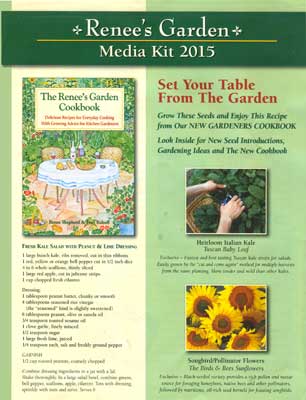One of the Joys of Maturity |
|
| Affiliated Advertisers |
Clicking through one of our banner ads or some of our text links and making a purchase will produce a small commission for us from the sale. The Old Guy's Garden Record Thursday, January 1, 2015 - Happy New Year! January, like December, is a slow month for gardening. The ground is either muddy or frozen and possibly like last January, covered with a blanket of snow much of the month. We'll continue to do maintenance such as cleaning tools, pots, trays and such that can be done inside the house or in the garage. Our gloxinia collection will get more attention this month than at any other time of the year, simply because we have the time to trim, transplant, water, and generally baby the plants.
Wikipedia describes Gesneriaceae, the family name of gesneriads, as "a family of flowering plants consisting of ca. 150 genera and ca. 3,200 species in the Old World and New World tropics and subtropics, with a very small number extending to temperate areas. Many species have colorful and showy flowers and are cultivated as ornamental plants." Our best gardening guide, which I frequently consult and on which much of this site is modeled, is still the late Jim Crockett's Crockett's Victory Garden.
First published in 1977 as a companion to the PBS/WGBH Victory Garden television series, the book's month-by-month log of Crockett's activities in his garden plots greatly helps with gardening techniques and timing for starting plants. Long, long out of print, Crockett's Victory Garden
Last year's "find" in the print yearbook was an offering of Spanish Skyscraper peas. We grew the variety two years ago, but they easily outgrew our five foot high trellis, bent in the wind, and languished. I'd planned to trellis the peas last spring around a utility pole, as Spanish Skyscrapers can vine to incredibly tall heights. Coming to my senses and realizing what treatments may have leached out of the pole into the surrounding ground, I held the seed over for this year. I plan to plant them along the sunny side of our garage in hopefully more benign soil. I can run a string trellis to the peak of the garage roof to accommodate the peas vining. We'll be waiting until late January to start any transplants for the garden. Seedings of geraniums, petunias, and onion transplants need to be timed to be ready for hardening off in late March and transplanting into our garden plots in April and later. Starting plants too soon can often make them unmanageable on our plant rack or even stunt the plants if held too long in their containers. So I bide my time through most of January before a flurry of seed starting begins towards the end of the month and continues through the next two months. By the end of March, our plant rack and the shelves in our sunroom are filled with plants. Once the weather becomes warm enough, we begin moving the plants first to our cold frame to harden off for a week to ten days. Then the petunias and some other annuals go into hanging baskets to adorn our back porch. The onions move to the back porch for another week of hardening off before going into the ground in early April. We usually hold the geraniums under the cold frame or in our sunroom until all danger of frost is past (early May) before moving them into our garden plots.
|
|
Friday, January 2, 2014 - Gloxinia Update
I'd love to dive in and order a bunch of seed from the Seed Fund, but as you can see, our plant rack is nearly full of gloxinias now. We have some Double Brocade and Cranberry Tiger gloxinias just about ready to come into bloom. I'd really like to see what bloom colors we get before beginning to give away some plants to make space under our plant lights for our garden transplants. I'd also like to hand pollinate and save seed from some of the Cranberry Tigers this blooming cycle, something I had omitted doing before the INSV virus took all of our previous gloxinia collection. Please note: I don't sell gloxinia seed, corms, or plants. Two More Seed Catalogs
Full disclosure: Botanical Interests is one of our Senior Gardening Affiliated Advertisers. Our Granny's Seeds catalog arrived as a PDF attachment to an email confirming our order of Granny’s Little Brown Crowder Peas. The owners of the new seed house in southern Indiana expressed their thanks for the small blurb I included about their new venture in a December posting. They seemed so nice and efficient that I added Granny's to our Others to Consider section on our Recommended Seed Suppliers page. I found both new catalogs interesting to look through, although we're pretty well done with seed orders for the 2015 gardening season. Saturday, January 3, 2014 - Seed Orders Arriving
Eric and Andrea Swedenburg from Granny's included a bunch of their gorgeous sweet potatoes with my order. Andrea's dad is the George, or Taterman, in George's Plant Farm. While we'll consume most of the sweet potatoes, I'm tempted to put one of the Beauregard or Nancy Hall sweet potatoes in a glass on the kitchen counter. We won't be rooting slips from the resulting sweet potato plant, but they make lovely kitchen windowsill plants! As our seed orders arrive, the seed gets stored in a cool, dry, dark cupboard in our basement. I also cut and paste the items ordered from our orders spreadsheet to our seed inventory spreadsheet. It may sound crazy, but I sometimes forget what I've ordered between January and planting time. On My Desktop
On Being a Bit Lazy During the winter months, one of the things I really enjoy is not having to mow our lawn and the adjacent field every week or so. I like mowing grass in the spring, and then it gets to be hot work by July. Towards the end of the season, it's just another chore to be done. Winter Weather to Arrive Soon While it may get up to 50° F today, the extended forecast now calls for temperatures at or near zero by Wednesday or Thursday next week. I drove past a farmer this week who was combining a field of soybeans. I suspect he's happy to be done, as farm machinery seems to break with more frequency in cold weather than warm. The upside of the cold snap is that such weather is hard on insects overwintering in garden trash, the soil, or mulch.
Today will be no different, as our John Scheepers Kitchen Garden Seeds catalog arrived in the mail yesterday. We've only ordered a few items from Scheepers over the last few years, but one of them was their Red Ursa kale seed. It has turned out to be a variety we now include in our annual kale planting. It produces large, tasty leaves with an interesting red spine and leaf tip coloring. There are a couple more seed catalogs we may receive yet this month, ones we've requested in the past but not ordered from. Friday, January 9, 2015 - A Good Question
I really don't mind answering questions about my experiences with seed houses, but folks can also do their own research by visiting a couple of good pages on the Dave's Garden site. Their Garden Watchdog allows members to post comments about seed (and plant) suppliers, rating them with a positive, neutral, or negative rating. The site apparently notifies companies of negative ratings, often resulting in some companies contacting the customer to try to resolve whatever issues caused the negative rating. Members are free to add to their comments about the vendor and often change their ratings at a later date. Another service of Dave's Garden is their Who Owns What page. Over the years, several corporate conglomerates have gobbled up a lot of trusted old seed house names. Folks thinking they are ordering from their longtime seed supplier may be surprised to find that the only thing that remains of the original seed source is its name and a web page (or catalog) run through a centralized warehouse for up to ten or more different seed houses. Shipping and customer service for the conglomerates is usually centralized, with customer service reps often not knowing many specifics about products and varieties the company sells. One doesn't have to be much of a detective to find three large conglomerates of old seed house names on the Who Owns What page. Burgess Seed (11), Gardens Alive! (16), and Jung Seed (9) have gobbled up lots of old seed house and nursery names while compiling some really disappointing ratings on the garden watchdog. Of the three, only Jung has maintained fairly positive ratings totals for it and its acquired subsidiaries. The worst of the bunch, Gardens Alive!, has managed to keep a minimally positive rating while ruining the ratings and reputations of a lot of old and once trusted seed vendors, including Gurney's Seed & Nursery, Henry Field's Seed & Nursery, and especially the US version of the venerable English seed house, Thompson and Morgan. (Note: Numbers in parentheses are the number of entities listed on the Who Owns What page as owned by the conglomerate.) While I usually avoid ordering seed from any of the conglomerates' seed house names, we still get a few varieties from R.H. Shumway Seeds, who along with the rest of the Jung Seed family have taken a false hit in the ratings from folks who think selling seed from Seminis/Monsanto is the same as being owned by them. A lot of respected seed houses still offer seed from the GMO monster, simply because Seminis/Monsanto is the only show in town for some good, but patented open pollinated varieties. I hope readers will view this posting not as a blacklist, but as a guide to finding good seed from reputable vendors. One of the biggest hits on the conglomerates' ratings comes from plant orders that arrive dead or nearly dead. We've been through such experiences with sweet potato slips, only last year finding a grower that ships sweet potato plants that arrive in pretty good to excellent condition. You, as a reader, may have a very good ordering history with any one of the conglomerates' old seed houses. As gardeners, we listen for good advice, but then we go ahead and do what works for us. From the Dave's Garden Watchdog ratings, one can sift through a lot of good, and sadly, a whole lot of disreputable seed houses. That's why I maintain our Recommended Seed Suppliers page of trusted seed houses based on our recent buying experiences, and to a lesser extent, the Dave's Garden Watchdog ratings. Your mileage may vary. Cold!
Annie and I were in Indianapolis yesterday. The day started out cold for the long drive, but bearable. The wind picked up by noon, and we were shivering as we made our way across snowy parking lots going in and out of various places in the big city. By the time we got home, it was just plain miserable outside, so much so, that we let all four of our dogs inside for much of the night. (Does that make it a four dog night?) The highlight of the trip didn't occur until a stop on our way home to a new Cheddar's restaurant in Terre Haute. The nasty weather pretty well ruined the crowd for the restaurant, so we not only had good food, but great service as well. Sunday, January 11, 2015 - Gorgeous Old Seed Catalog Covers Web buddy Don Smith sent me a link to the Smithsonian Institution Libraries' collection of Seed Catalogs and the one liner, "Just what the author of the Mid Winter Seed Catalogue Review was looking for - some more old seed catalogs to review." His comment is in reference to something I wrote last Sunday about needing to change the name of this site to reflect all the seed catalog reviews I'd done since November. Looking through the collection of seed catalog covers and back covers is a real treat for seed catalog connoisseurs like me. The vibrant artwork is incredible.
One can search the Smithsonian collection by company name, flower or vegetable type, or by people and places. I did a search for gloxinias, of course, since we grow lots of them. To balance things out, I also searched for cauliflower.
I obviously had a ball looking at old seed catalog covers. The Smithsonian's Frequently Asked Questions and Answers page let me know that I was okay in sharing some of the images here.
Yippee - Our First Double Brocade Gloxinia Bloom
Our larger and earlier Empress, Cranberry Tiger, and open pollinated gloxinias have pretty well quit blooming and are apparently heading for their first required period of dormancy. While we'll miss their large, showy blooms, they should emerge from dormancy as stronger plants capable of carrying even more blooms than they did in their first blooming cycle. By a gloxinia's third blooming cycle, some are capable of producing around twenty center blooms with a little careful pinching off of leaves in the center of the plant.
Taking advantage of the frozen ground yesterday, I pulled our truck right up to the back door of the house to unload supplies from a major shopping trip. I noticed while out shopping that creeks and ponds in the area appear to have a pretty good layer of ice over them where currents aren't present that could make for some good ice skating. But I'm a little too old and gimpy to lace up my skates anymore. Seed Starting
And if you're chomping at the bit to get started now, you can take a look at our January, 2014, blog to see when we began starting stuff last year...all a good bit earlier than this year. I'll get into our delay a bit more in a posting next week. There's also a big image of our very Super Bowl worthy Texas Nachos! Friday, January 16, 2015 - Bad Day, Good Day As I write this evening, I could complain about having a couple of bad days, but I won't. I'd gone to Indy yesterday for a final, last minute pre-op conference with my orthopedic surgeon. Things looked good for total hip replacement surgery scheduled for this morning, but on the way home, the doc called. Another test had come in with an irregularity on my heart stress test. So instead of getting a new hip today, I went to a cardiologist who described the test results as "low risk" for surgery, but strongly suggested I have a heart catheterization. It turned out that he had the place and the time, and I had the heart. I confidently thought doing the heart cath today should allow me to get rescheduled for the hip replacement fairly quickly. Unfortunately, the heart cath revealed several serious narrowings of arteries in my heart. He called them "widow makers," saying "You probably would have died on the table!" Otherwise, he said I had an exceptionally strong heart.
I'm glad I spent some time yesterday listening to It Is Well With My Soul Implications for Gardening This Season My hip surgery was purposely timed to get it and the several months of necessary rehab done before gardening season arrived. That's part of why I'd been cautious with seed orders this year and had delayed starting any transplants. The garden planning I did late last fall for 2015 is pretty much out the window. I'll spend some time considering options for the 2015 gardening season before making any decisions. I may go ahead and start some transplants, knowing full well I may or may not be able to use them. I probably won't delay hip surgery any longer than absolutely necessary, as I just barely limped through last season. That puts it smack in the prime gardening months of May-July. I may cover crop the part of our large East Garden that isn't already in grass and alfalfa. I should be able to plant our raised garden plots in our back yard before the hip surgery. They may lend themselves to some easy gardening while I recover and rehab. The raised bed plots have been fall tilled and are planting ready for next spring. We'll see. And looking at the larger picture, stents and artificial joints didn't exist for our parents and grandparents. Right now, I'm being thankful for some incredibly skilled folks at OrthoIndy and the Providence Medical Group. After having a wire with a camera on the end of it threaded through my arteries into my heart this afternoon, I'm able at 11 P.M. to sit at the computer and write this posting. Amazing!
We have one more warm day in our forecast before conditions return to more normal winter weather. The ten-day forecast calls for highs in the 30s and 40s with the possibility of some snow and ice pellets (yuck). Starting Some Flowers - Petunias
About three years ago, I switched from starting our petunias in fourpack inserts to seeding them in used egg cartons. At first the change was just a novelty, but I've since found that I really like having an egg carton of young petunias growing on one of our kitchen windowsills for a few weeks. The petunias quickly outgrow their egg carton cells and eventually have to be moved to fourpacks or other larger quarters, but it's a handy way to start them. I've previously described this method of starting petunias, so I won't repeat it all here, other than to show the small, pelletized seed. I do go back and water the seed in the cells, using a syringe filled with hot water to begin melting the pellet to release the seed onto the sterilized soil under it. I started one carton (12 cells) of Supercascade and another of Double Cascade
I started 15 Maverick Red and 10 Orbit Both the egg cartons of petunias and the geranium seed bagged in ziplock freezer bags went into a tray covered with a clear humidome and over our soil heating mat set at 71° F. The petunias require light for germination, and I learned a year or so ago that geraniums germinate better with a little light than in total darkness (Thanks again, Mike.).
Update: I've obviously decided to go ahead and try to plant a much smaller spring garden for this season before my hip surgery. Our East Garden will have to lie fallow for the season, as there is no way I'll be able to dig potatoes or sweet potatoes or adequately care for large plantings of sweet corn and melons. But we should be able to grow and harvest early maturing crops such as brassicas (broccoli and cauliflower), peas, lettuce, and spinach in our raised beds. I hope to start a flat of onions sometime next week, so we may have onions and carrots, which we grow together each year, too. Tomato plants will go at either end of our early, tall pea trellis, so that should give us a nice, if far smaller, variety of vegetables to harvest early this summer. Since my wife, Annie, still works full time, I won't mess with planting anything other than the tomatoes that would require her to spend much time in the garden. She's a computer tech for a large, midwestern banking concern and has to travel a good bit. Wednesday, January 21, 2014 - Growing Carrots
This one was really a lot of fun to write, as we have lots of images of carrots growing in our garden plots over the last few years. We regularly put up 12-15 pounds of carrots each spring and fall from our intensive plantings. It's really that easy. We actually grow far more carrots than Annie and I can use, enriching our family, neighbors, and local food banks with the excess healthful vegetables. Leave your car unlocked at harvest time at our local Walmart, grocery, or hardware store, and you might find a bag of carrots on your passenger seat when you return to your vehicle!
Sadly, as the late Jim Crockett pointed out in Crockett's Victory Garden, "Wandering Jews do not age well." They last for about a year before dropping leaves at the base that no amount of cutting back or fertilization will cure. He adds, "The name wandering Jew was a reference to their reputation as travelers, like many of the Jews of Europe who moved from town to town, having no homeland to call their own." The easy answer to having a vibrant Wandering Jew plant (or plants) throughout the year is to occasionally take cuttings and start new plants from them. Our current Wandering Jew is at least a sixth or seventh generation clone of the original that one of our daughters gave us! Once its progeny matures and takes its place in the kitchen, the current plant will finish its days this summer adding welcome color to our back porch.
The cuttings to be rooted in sterilized soil got a touch of rooting gel, although wandering Jew stems root readily without any special hormones. While not absolutely necessary, I put the soil cuttings under the humidome (over a soil heating mat) with the petunias and geraniums I started on Monday. The humidome helps hold in moisture, although one needs to watch for leaves with water on them which can lead to rot. Both sets of cuttings should begin to root in just a few weeks. Once rooted, they'll go into large, hanging basket pots, three plants around the edge with one in the center (if they all root). What a Surprise!
When I opened up the bags, I found that 17 of the 25 seeds I started on Monday had germinated. Considering some of the problems we've had germinating geranium seed over the past few years, the initial germination rate of 68% was pretty amazing. And we'll probably have a few more of the remaining seeds germinate in the next few days. Once the seeds begin to germinate, they need to be moved to pots of sterilized soil. So I cleaned some 3" pots and began moving the seed into small depressions I made in the center of each pot of soil, covering the seed lightly with vermiculite. Then the tray of pots was covered with a clear humidome and moved onto another soil heating mat on our plant rack. Note that good, used copies of Crockett's Victory Garden are still available from Amazon for about $4 shipped!
The geranium seeds I started on damp coffee filters on Monday and moved to three inch pots on Wednesday have pushed up through the vermiculite I covered them with. Of the seventeen geranium seeds moved to pots, fifteen are up now. The petunias I started in egg cartons on Monday are also beginning to emerge, although much slower than the geraniums. I left both sets of seeds over soil heating mats set at a pretty moderate 71° F. I'd like for them to root a bit more before taking them off the soil heating mats. Needing two soil heating mats so early in the season pretty well filled up the open space under our plant lights in the basement. I'll need to move another flat or two of gloxinias that have already bloomed to the sunroom soon to free up some space. Time for a Nap I'm napping a lot these days with the full blessings of my lovely wife, Anne. I checked into Union Hospital in Terre Haute yesterday morning to have another heart catheterization, only this time to place two stents into narrowed arteries in my heart. Annie and I were on the road and on our way home before noon today. I may have driven the night nurses a bit crazy last night, as during sleepless hours, I repeatedly walked the hallway of the cardiac floor, as getting some minimal exercise after the procedure is recommended. After my last laps, a physician's assistant was kind enough to put a note on my door asking folks not to wake me, something they'd been doing before at about 20 minute intervals. It appears to have been a successful procedure. (Hey, I'm up and writing this posting just 30 hours or so later!) I'm a bit sore here and there and definitely tired. I'm going to go take a nap now. Saturday, January 24, 2015 - Starting Onions If you're going to grow long day onions in our area, now is about the right time to get them started from seed. I long ago switched from using onion sets and purchased transplants to growing our own onion plants. As the late Jim Crockett mentioned in Crockett's Victory Garden, sets can be expensive and definitely limit one to the varieties of sets, usually just two or three, your garden shop sells. Commercial onion transplants, whether purchased by mail order or at a garden shop, were always disappointing to me. Mail ordered plants often arrived terribly dry, and plants from garden centers weren't much better and were also expensive. Looking back over the last few years, we've started our onions as early as December (way too early) and as late as Groundhog Day. Interestingly, all of those starting times produced good crops, although a really early start in December, 2013, that was supposed to be just a germination test of our seed, took a lot of extra trimming before transplanting.
As with everything else we start from seed, our onions are planted into sterilized planting medium made up of commercial potting soil, some peat moss, with a touch of bone meal and lime thrown in. I avoid commercial mixes such as Miracle-Gro that have lots of perlite and fertilizer pellets thrown in. The perlite just annoys me and the fertilizer can burn emerging seeds! Our current favorite base potting mix is Whitney Farms Organic Potting Soil Last year, we grew thirteen different varieties of onions, nine of which were new to us. This year I plan to grow eight varieties in our main raised garden bed, cutting out four that didn't do very well last year, and one for which fresh seed is no longer available. This year will still be a test for the new varieties, as one year under nearly ideal growing conditions isn't much of a test. Eventually, we'll get down to four or five varieties, I hope, that produce dependable crops for us. Other than our Walla Walla sweet onions, most of our onions are grown for storage and winter use. That eliminated some nice looking onion varieties that simply didn't store well in our basement, which runs a bit too warm for storing onions and such. I take a bit of time starting our onions. I first fill a slotted seed flat inside a perma-nest tray with our sterilized planting medium. I bottom water the perma-nest tray with fairly hot water, as the peat moss in the commercial mix and that I've added to the mix doesn't readily absorb cold water. Note that since we have a water softener, I heat non-softened water from our bypass faucet in a teapot to make sure I don't add any residual salt to the planting mix. Then I let the flat sit a few minutes to cool down.
Onion seed is fairly small, but granular, making careful seeding not too awfully hard. I try to space seeds a half to an inch apart in the row. Since I was using mostly year old seed this year, something I don't recommend, I seeded a bit heavier than usual. With my scheduled surgeries this spring, I decided to take a chance using old seed to cut costs, as I still don't know for sure if I'll be physically able to garden this summer (Absolute bummer I use my fingers to pinch the planting medium over the onion seed, making sure all of it is covered, as onion seed needs total darkness to germinate well. I go back and lightly firm the soil in the rows with the flat of my hand or a ruler to ensure good seed-soil contact. After reviewing the results of our onion trials from last year, I chose four yellow storage onions for this year. Copra, Patterson, and Milestone are all hybrids, but we found the open pollinated Yellow of Parma variety promising last year. For our red onions, we're going with the short day Red Creole
While I've done so in the past, I didn't put our tray of onions over a soil heating mat. Ours are currently both occupied with geranium and petunia starts. Onions will easily germinate at around 65° F, about the ambient temperature in our basement these days. In reading up about onions last night, I ran across several good pages describing short, intermediate, and long day onions. I've shared links to them below, along with links to a couple of our related feature stories about growing onions.
And...I'm sorry about the quality of the images illustrating today's posting. The lighting in our kitchen this afternoon wasn't good, and I simply was off my game a bit when it came to photography. But hey, I got our onions started! Monday, January 26, 2015 - Playing with Bulbils
While all of our saved garlic could have used an increase in vitality, only our elephant garlic, which is actually more closely related to a leek than garlic, put up scapes. So I worked around the elephant garlic scapes in one of our raised beds last summer, letting them mature until the bulbils produced in the flowers were almost ready to begin dropping from the plants. Besides enjoying some very pretty flowers, one of which produced our best garden shot of 2014, I ended up with a lot of small, dried bulbils on the "seed heads" that I cut, brought inside, and let fully dry. Note that the term "bulbil" is used for both the small garlic cloves that form on the outside of a mature elephant garlic bulb and the tiny, seed-like growths in the "garlic flower." Some online sources report growing great garlic rounds from the bulbils that grow at the base of a garlic, but I've had no luck getting them to grow for me. They have an extremely tough outer coating that resists water penetrating them to induce germination. But sources also relate that they're good for cooking, once you break the tough outer coating (with a hammer, I assume). But for today, I'm writing about the tiny bulbils formed at the top of an elephant garlic scape in the "garlic flower." After letting the seed heads dry on top of a bookshelf until well into fall heating season, I bagged them in a food storage bag and put them on a cool, dark shelf in our basement where we store incoming fresh seed. Then I forgot all about them...until new seed began to arrive in December. While most sources suggest planting bulbils in the fall as one does with normal garlic cloves, they also relate that the plants that grow from the bulbils are tough to distinguish from nearby grass weeds that may emerge. Spring planting can also be done with the bulbils, but that delays their growth a bit. Trying to figure out what was grass and what was a baby elephant garlic didn't sound like something I wanted to experience. Having used grass clipping mulch in our raised garden beds for years, we have an abundant supply of grass seed in our soil that came in with the grass clipping mulch.
I worked a bit at cleaning the bulbils of their stems and trash, winnowing them a few times in a light breeze outside. I finally gave up and decided just to plant the bulbils, stems, trash and all in a half flat of sterilized potting mix. I liberally spread the bulbils across the potting mix in the half flat, going back and pushing them into the moist soil. (Extra bulbils went in a bag in the freezer, just in cast the bulbils require stratification to germinate.) Then I sprinkled just enough potting mix over the bulbils to completely cover them.
I covered the half flat with what was supposed to be a clear humidome, although it has seriously yellowed over the years. I need to find a new source for half flats and half size humidomes anyway, as most of my half flats now leak badly. The half flat went onto a shelf on our plant rack, in front of our germinated geraniums that are off the heat mat. I had to pot up three more germinated geranium seeds today, bringing our germination rate up to 88% for the 25 seeds I started last week. Since this is the first time I've messed with starting bulbils, I have no idea how long it might take them to germinate under our growing conditions. It could be days, weeks, months, or not at all if they're not viable. Even if they grow, getting garlic from bulbils is a two or three year process! But it's fun to experiment with new things. Here are a few links from some Canadian garlic bulbil suppliers that tell a bit more about growing garlic from bulbils:
Water Roots
I hope to get two, healthy hanging baskets of Wandering Jew from all of the cuttings taken. One will go into our kitchen in the spring when we move our current, mature plant to the back porch. The other plant will also go to the back porch, adding some nice color there. Health Update With some good advice from medical professionals, friends, and family, I'm taking it easy as I recover from having a couple of stents inserted into my heart last Thursday. We did take some dandy pictures of the extensive bruising left where the surgeons entered the femoral artery in my thigh to make their way up to my heart. I won't do an Anthony Weiner here with the photos, but my brother who has had the procedure, says the bruising will go away in about a week or so. As of today, there is almost no pain from the procedure. In a little over a week, we get to do the whole thing over again to get a last, narrowed artery opened up. Thanks to my gardening friends for the prayers and well wishes sent. It's appreciated.
With a good bit of the Northeast digging out from a blizzard, I almost feel guilty about our beautiful weather today. It's bright and sunny outside with an expected high temperature of 41° F this afternoon. When I went downstairs to check our plants under our plant rack, it was "bright and sunny" there as well. I was greeted with several Double Brocade gloxinias in bloom with rich, deep green, healthy leaves. Our petunias seeded in egg cartons on January 19 emerged a few days ago, coming off their heat mat and having their humidome removed yesterday. They appeared to be strong enough to be moved to a windowsill in our kitchen. The petunias will outgrow their egg cartons sometime early next month and will need to be moved to fourpacks at that time. Then, they'll either go back under our plant lights (fourpacks don't fit on our kitchen windowsill) or on a bookshelf in our sunroom. These trailing variety petunias are all destined to fill early hanging baskets for our back porch. I'll seed some other petunia varieties next month that will be used in our garden, as it's a bit too early to start them yet.
The plant and its successors from cuttings had beautiful, if sparse, blooms. And then a couple of years ago, our cuttings didn't take. With everything that's going on for us health wise this year, I'd resolved not to order much seed for the new season. In a moment of weakness a week or so ago, swayed by a now expired free shipping deal, I ordered a single packet of Summer Showers I seeded the geranium seeds today on a brown coffee filter, putting the ziplock bag holding them in a tray over a soil heating mat. If we only get one plant as pretty as our old one out of the planting, I'll be happy. Saturday, January 31, 2015 - January Wrap-up
Our first petunias are already in our kitchen windowsill. We have a whole flat of geraniums about a half to three-quarters of an inch tall in three inch pots. The flat of onions I seeded a week ago with old seed is is showing signs of life. And we once again have a good many gloxinias in bloom. Looking back to last year's January animated GIF, I'm thankful we haven't had the snow we had last year, getting snowed in then for several days. Not Quite a Catalog
I received a Renee's Garden 2015 Media Kit today. We'd gotten one last year, probably because I'm a member of the Garden Writers Association, but I set it aside without much consideration. Since I'm still on "limited duty" these days, I had plenty of time to research Renee's Garden a bit today and found they have a pretty good rating on Dave's Garden Watchdog. The media kit consisted of an attractive four page flier and a couple of freebie packets of garden seed. I may have ignored last year's media kit because I may not have been impressed with the freebie seeds, but this year Renee sent some Tuscan Baby Leaf Kale seed. And I do love my kale. I've been buying bunches and bags of it over the last few weeks at the grocery. The store bought stuff isn't anywhere as good as what we grow, but it gives me my needed kale fix these days. The offerings on the Renee's Garden site include heirloom and other vegetable varieties, both open pollinated and hybrid. Prices for their seed seem reasonable based on the quantities included in our freebie packets. Shipping charges also appear to be pretty fair as well. I probably won't order anything from Renee's this year with our reduced garden this year, but hope to be able to try the kale seed. Totally Off the Subject of Gardening Probably like many readers, I was incensed at Intuit's price gouging and feature depletion of their TurboTax software for the 2014 tax year. Instead of ordering at Intuit's new, exorbitant prices, I decided to wait and see what happened, as I wasn't going to fork over $75 for a watered down version of TurboTax Deluxe (plus State and eFile). (Hey, I used to successfully file form 1040 with schedules C and F, plus other farm related forms on paper without getting audited. Well, I did have a USDA farm audit five years after I quit farming...but came out unscathed.) After receiving a rather self-serving apology via email from Intuit TurboTax general manager Sasan Goodarzi last week for their incredible corporate greed (my view), I decided to shop for alternatives. Before they cut off their Mac version, I was perfectly happy for years using Kiplinger's Tax Cut. After they insulted their Macintosh users by dropping the Mac version, I moved to TurboTax. Kiplinger's Tax Cut got bought out years ago by H&R Block and the Mac versions returned, but I'd neither forgiven them for the snub, nor tried their software again until tonight. At ten bucks less than the now reduced price TurboTax, I downloaded and installed H&R Block's Tax Software 2014 Deluxe + State Intuit's greed deserves a few more links:
Okay, I'll step off my soap box before I fall off. But companies like Intuit, a very slimy bunch over the years, really deserve a swift kick for such power (and money) grabs. End of Month After that rant, I should add that I'm thanking the Lord to still be alive. Had we gone ahead with the hip transplant earlier this month, I might be in the ground by now (hopefully nourishing some crop growing above me). In an exchange with my hip surgeon's chief nurse today, I learned that they wouldn't even consider replacing my bad hip until June, at the earliest. But I'm thankful for the medical professionals who did their jobs and got me on the path to better health, although probably not until the 2016 gardening season. Contact Steve Wood, the at Senior Gardening |
| Affiliated Advertisers |
©2015 Senior-Gardening.com

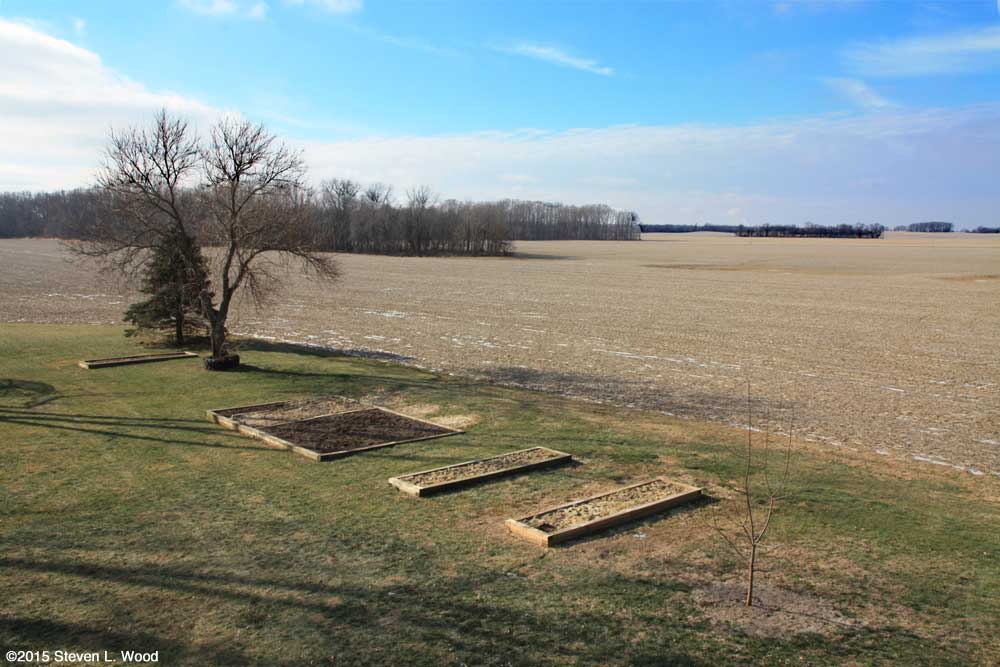

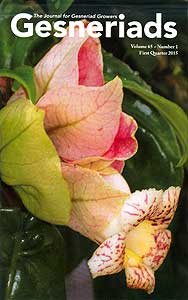

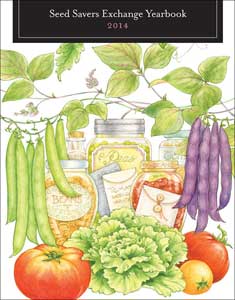
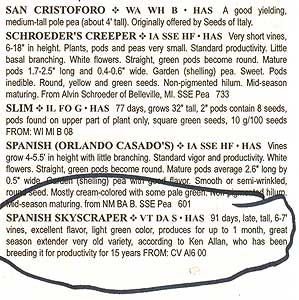
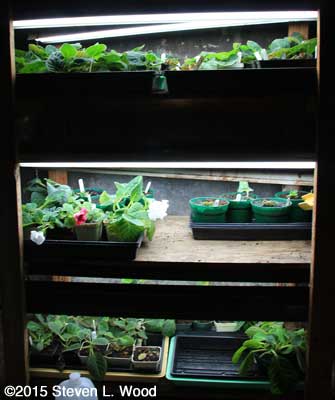
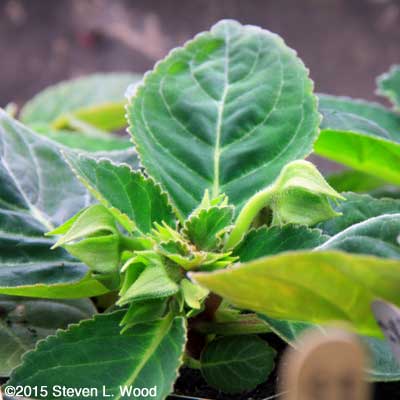
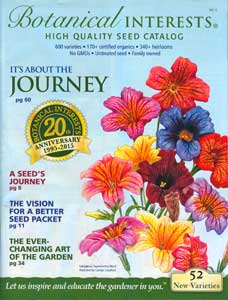


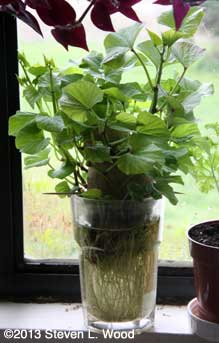

 A couple of years ago, I threw together an animated GIF of the images I use as my desktop background photos (minus the family photos). I decided to take another shot at it this year. The image out an airplane window is the oldest, from 1975! There are piglets from my farming days in the 1980's and gloxinias in my classroom from the 90's. The rest run pretty much chronologically up to the present. Most of the images are available on one of our
A couple of years ago, I threw together an animated GIF of the images I use as my desktop background photos (minus the family photos). I decided to take another shot at it this year. The image out an airplane window is the oldest, from 1975! There are piglets from my farming days in the 1980's and gloxinias in my classroom from the 90's. The rest run pretty much chronologically up to the present. Most of the images are available on one of our 

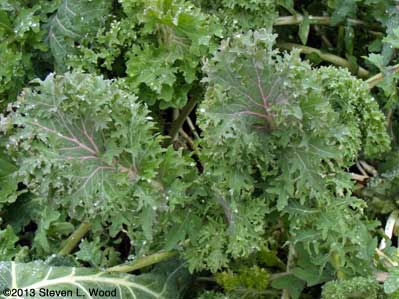
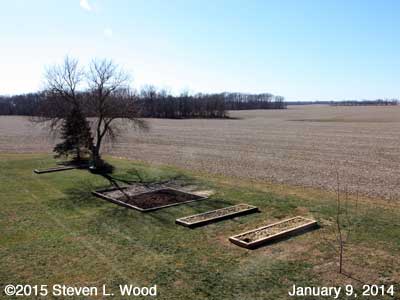
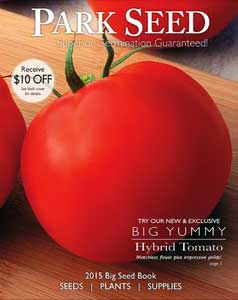
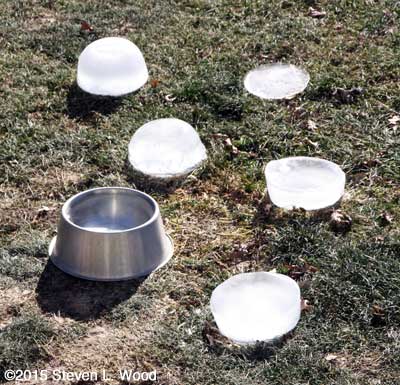



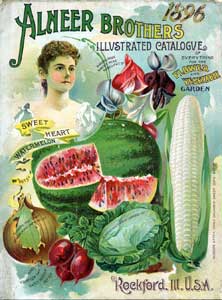
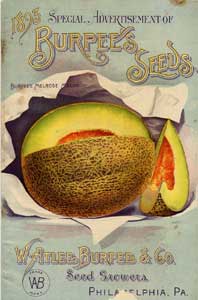

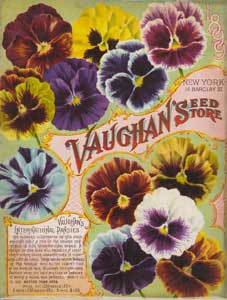

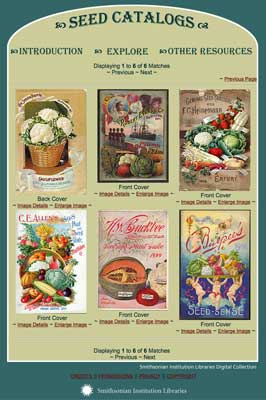
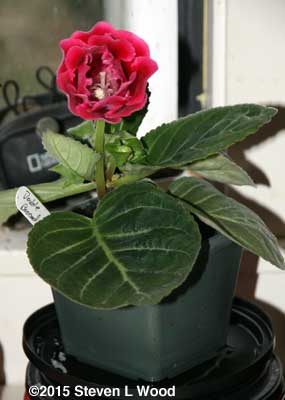



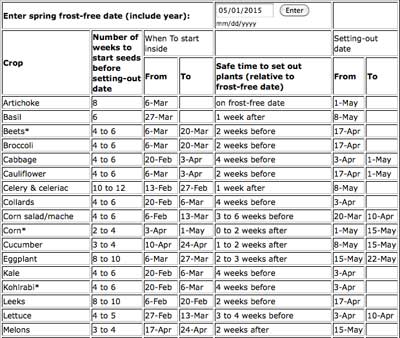



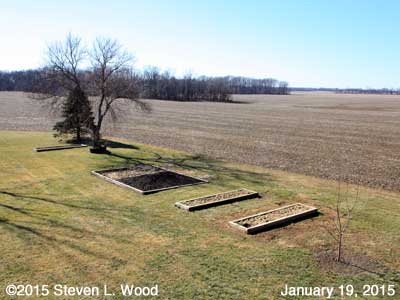

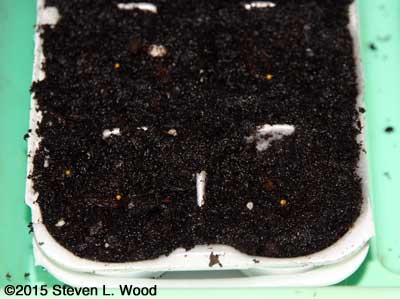
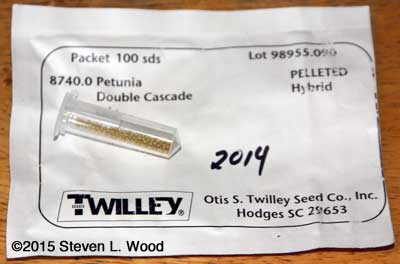

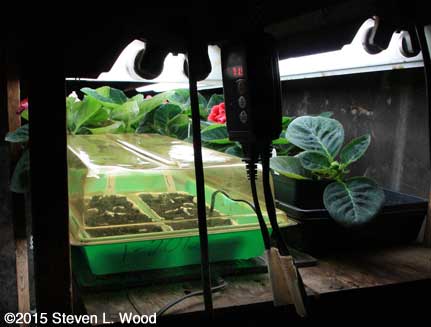
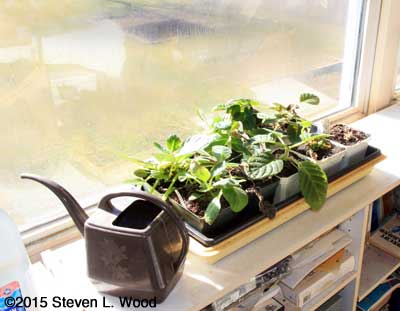

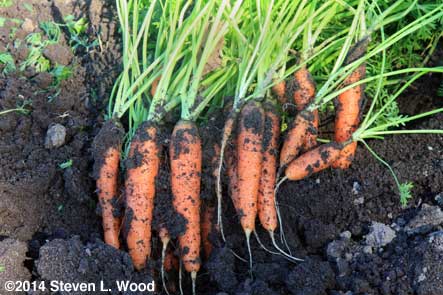

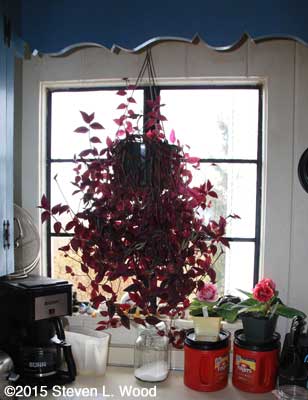
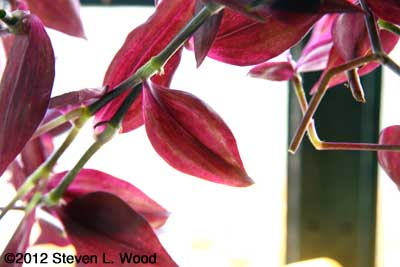

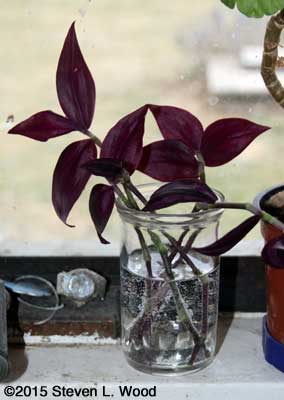
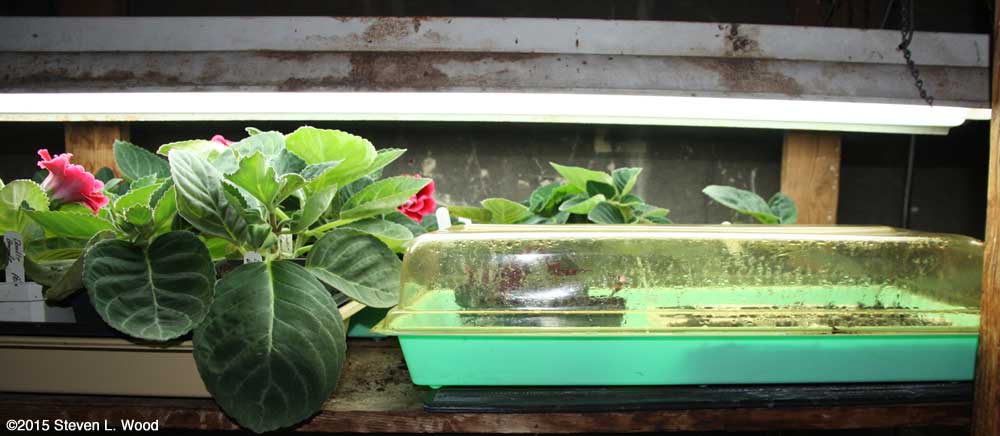




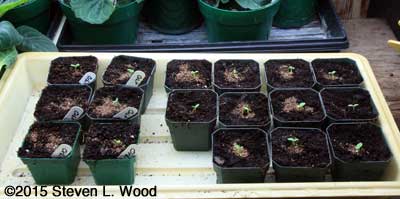

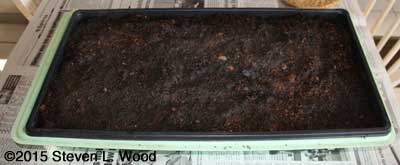
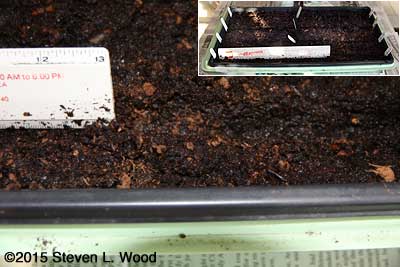
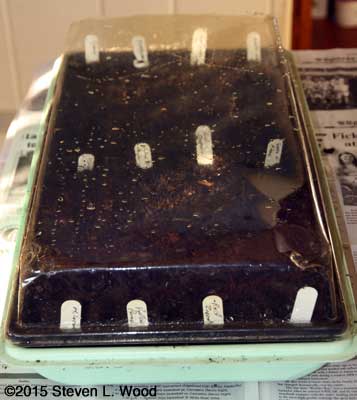


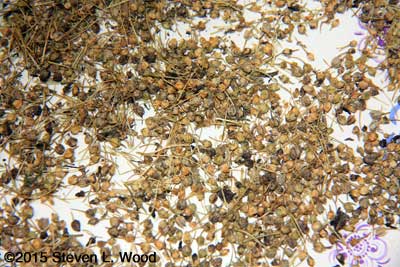
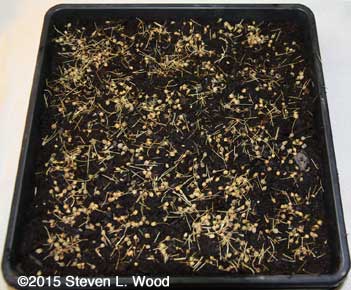
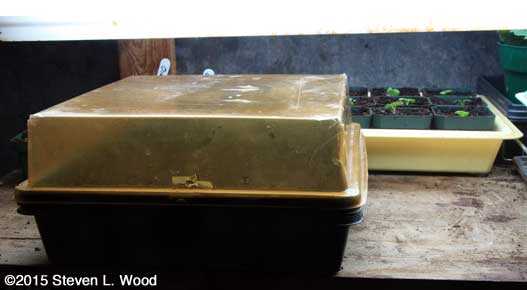


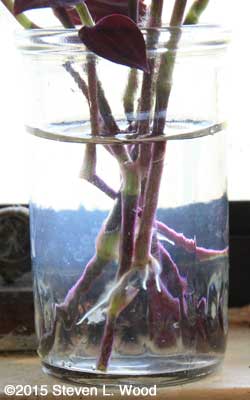



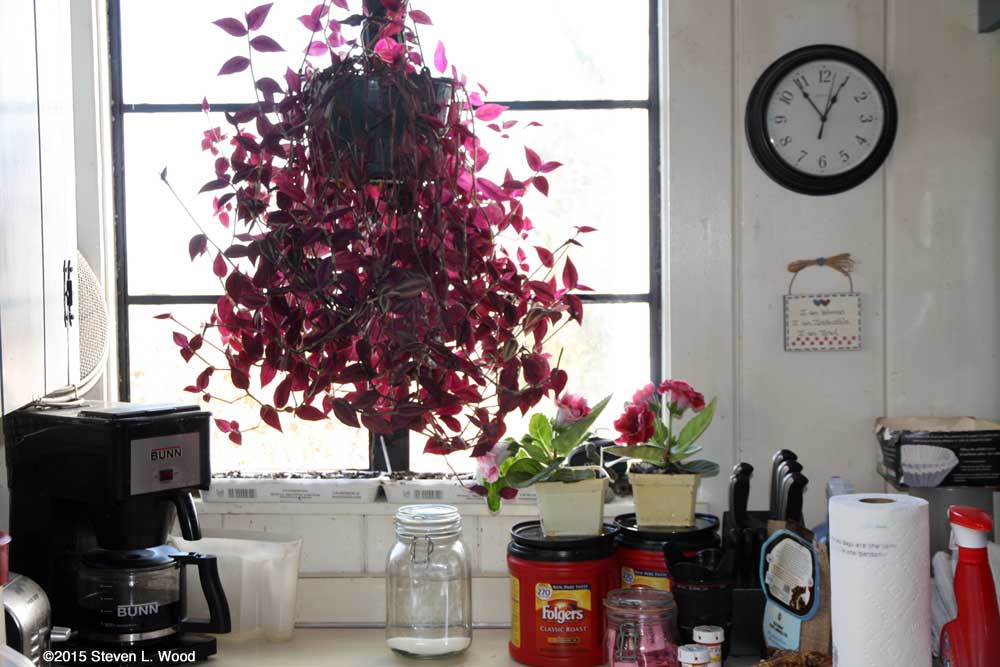


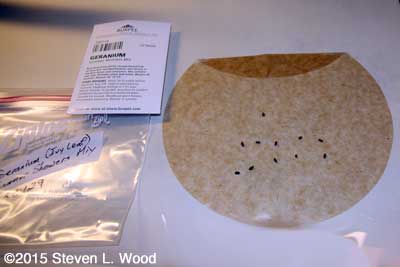
 Wow! Has it been an eventful month for us! Lots of health issues, but also lots of planting done.
Wow! Has it been an eventful month for us! Lots of health issues, but also lots of planting done.